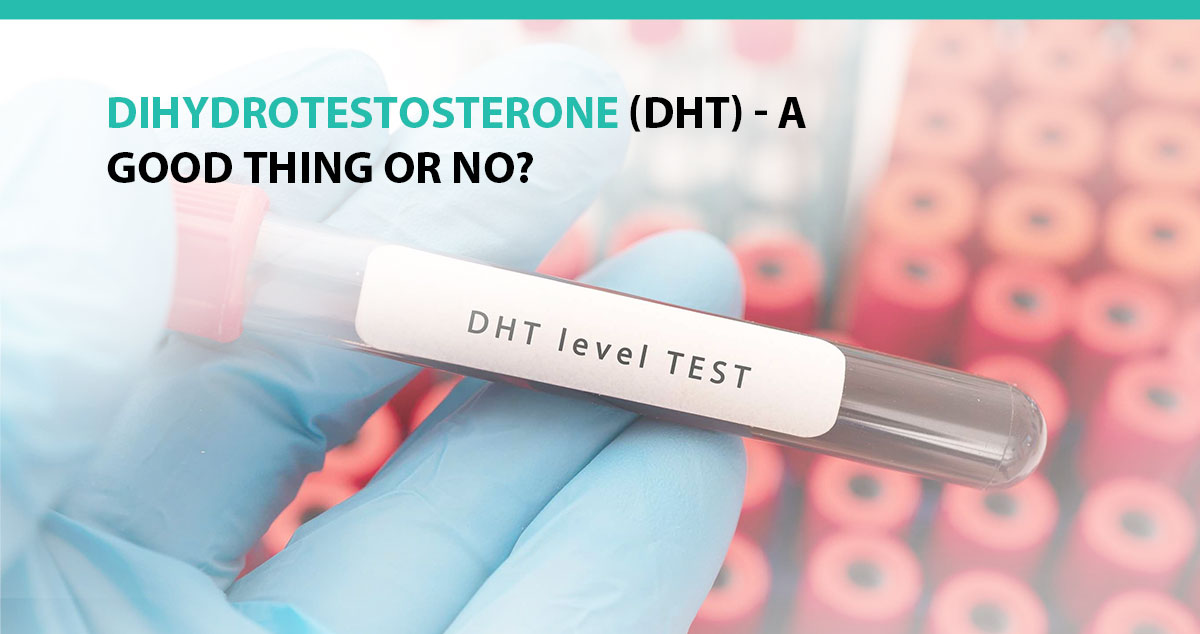
Lather, Rinse, Repeat
Dihydrotestosterone (DHT) is a hormone that plays a crucial role in the development and maintenance of male characteristics, such as the growth of facial and body hair, deepening of the voice, and development of the prostate gland. However, elevated levels of DHT are also linked to hair loss in men, specifically male pattern baldness.
To understand the link between DHT and hair loss, it is important to know how hair growth works. Hair growth is a cyclical process that involves three stages: anagen, catagen, and telogen. During the anagen phase, the hair follicle actively grows, and new hair is formed. The catagen phase is a short transitional phase during which the hair follicle begins to shrink. The telogen phase is a resting phase during which the hair follicle is inactive, and the hair shaft is shed, meaning the single hair inside the follicle falls out. Typically, only one hair grows out of one hair follicle.
But I Thought Porcupines…
Hair follicles are tiny structures located in the skin that produce and nourish hair. Each hair follicle is connected to a tiny muscle called the arrector pili muscle, which can contract and cause the hair to stand up (like when you get goosebumps), called piloerection. It’s also the muscle which causes porcupines to look scary to predators. (Despite a common misconception, they do not shoot their quills, nor are they poisonous.)
Male pattern baldness occurs when hair follicles gradually shrink and produce thinner and shorter hair until they stop producing hair altogether. This process is known as miniaturization, and it is thought to be triggered by DHT.
DHT is derived from testosterone, a hormone produced in males primarily in the testes. Testosterone is converted into DHT by an enzyme called 5-alpha-reductase, which is found in hair follicles, the prostate gland, and other tissues. DHT binds to androgen receptors in hair follicles, causing them to shrink and produce weaker hair.
It’s Not All Good News Though
While DHT is an important hormone for male development, excessive levels can lead to hair loss. This is because DHT can bind to hair follicles for an extended period, causing them to shrink and eventually stop producing hair altogether. DHT also shortens the anagen phase of the hair growth cycle, leading to a shorter hair lifespan and increased hair shedding.
Several factors can influence DHT levels, including genetics, age, and lifestyle factors such as diet and exercise. In some men, genetics play a significant role in the development of male pattern baldness, with certain genes being linked to higher levels of DHT and increased susceptibility to hair loss.
Treatment options for hair loss related to DHT include medications that inhibit the conversion of testosterone to DHT or block the binding of DHT to androgen receptors. One commonly prescribed medication for hair loss is finasteride, which inhibits the activity of 5-alpha-reductase, the enzyme responsible for converting testosterone to DHT. Another medication is minoxidil, which is a topical solution that promotes hair growth and may counteract the effects of DHT.
Not To Be Left Out
Although it is commonly thought of as a male hormone, both men and women produce DHT. In females, it is produced primarily in the ovaries and adrenal glands and is derived from testosterone, and plays a role in sexual development and function, as well as other physiological processes. However, the exact amount of DHT produced by females can vary depending on a number of factors, including age, overall health, and hormonal fluctuations.
While there is no specific amount of DHT that is considered normal for females, the levels are typically much lower than in males. In general, females have about one-tenth the amount of circulating testosterone as males, which means that they also have lower levels of DHT.
It’s important to note that excessive levels of DHT in females can lead to health problems, such as hirsutism (excessive hair growth), acne, and androgenic alopecia (female pattern hair loss). DHT is also involved in the development and maintenance of female genitalia, as well as the growth and maintenance of body hair.
It’s a lot to take in, but DHT can lead to male or female pattern balding and a hair transplant can make you feel like yourself again. It can give you permanent, natural-looking results. Select only a licensed, certified surgeon and ask to see a portfolio of past procedures. This way, you’re assured you’re getting the best care possible. Schedule a consultation if you would like to find out more about our hair restoration treatments and what we can do for you.










